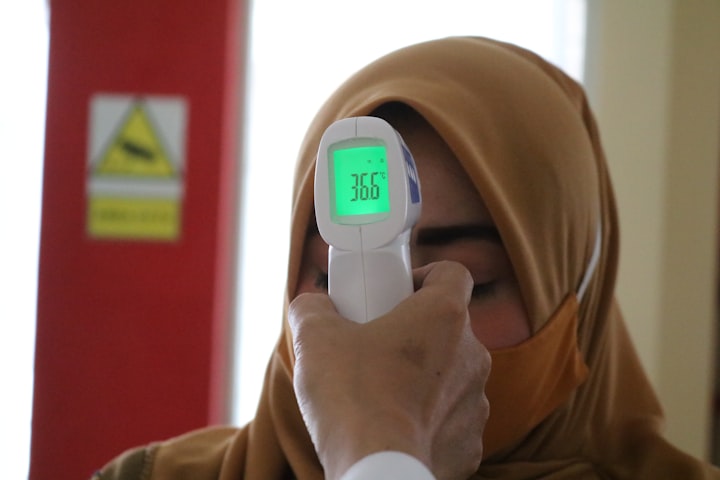Lyme Disease Symptoms in Humans Treatment
Understanding Late Stage Lyme Disease: The Descent into Darkness

Discovering you have Lyme disease is akin to embarking on an emotional rollercoaster. The journey is riddled with uncertainty, fear, and the overwhelming weight of the unknown. As we delve into the harrowing realities of Lyme disease symptoms in humans, we unravel the intricate layers of this emotional odyssey.
Understanding Late Stage Lyme Disease
A. Definition and Progression
Late-stage Lyme disease isn't just a physical ailment; it's a relentless assault on the mind and spirit. The journey begins innocuously, with subtle symptoms that often go unnoticed. But as the infection progresses unchecked, it morphs into a monster, wreaking havoc on every aspect of life.
B. Common Symptoms
The symptoms of late-stage Lyme disease are a haunting reminder of the body's betrayal. It's waking up each day to relentless pain, the agony of joints screaming for relief, and the fog of cognitive decline clouding every thought.
Long-Term Effects of Lyme Disease
A. Impact on Physical Health
The toll of Lyme disease on physical health is nothing short of debilitating. It's the frustration of watching once vibrant energy dwindle into exhaustion, the ache of muscles refusing to cooperate, and the relentless assault on the body's resilience.
B. Impact on Mental Health
But perhaps the cruelest blow of Lyme disease is its assault on mental health. It's the suffocating grip of anxiety, the relentless whispers of doubt, and the crushing weight of depression that threatens to engulf every glimmer of hope.
Recognizing Early Symptoms
A. Importance of Early Detection
In the battle against Lyme disease, early detection is the beacon of hope in a sea of darkness. It's the lifeline that offers a chance to halt the relentless march of the disease before it consumes every ounce of vitality.
B. Common Early Signs
Recognizing the early symptoms of Lyme disease is akin to deciphering a cryptic code. It's the fever that refuses to break, the tell-tale rash that whispers of impending doom, and the fatigue that seeps into the very marrow of one's bones.
The Tell-Tale Tick Rash
A. Description of the Rash
The tick rash is more than just a physical manifestation of Lyme disease; it's a stark reminder of the invisible enemy lurking within. It's the crimson hue of betrayal etched upon the skin, a silent scream for help in a world deafened by indifference.
B. Importance of Prompt Action
But in the face of adversity, prompt action is the sword with which to slay the dragon of Lyme disease. It's the urgency of seeking medical attention, the fervent plea for validation in a world that often dismisses the severity of invisible illness.
Managing Lyme Disease Symptoms
A. Treatment Options
Treatment for Lyme disease is not just about eradicating the bacteria from the body; it's about reclaiming a sense of agency in the face of adversity. It's the journey of resilience, the pursuit of healing, and the unwavering determination to defy the odds.
B. Lifestyle Adjustments
But perhaps the most potent weapon in the arsenal against Lyme disease is the power of lifestyle adjustments. It's the choice to nurture the body, mind, and spirit through holistic practices that foster healing from within.
Coping with Long-Term Effects
A. Support Systems
In the darkest depths of Lyme disease, support systems are the beacons of light that guide the way. They're the shoulders to lean on, the hands to hold, and the unwavering presence that reminds us we're not alone in our struggle.
B. Strategies for Improvement
And in the pursuit of improvement, we uncover the resilience that lies dormant within. It's the resilience to adapt, to evolve, and to thrive in the face of adversity, forging a path towards a brighter tomorrow.
Conclusion
In the battle against Lyme disease, every symptom is a battle scar, a testament to the resilience of the human spirit. But amidst the chaos and uncertainty, there is hope. Hope for healing, hope for resilience, and hope for a future where Lyme disease is no longer a specter lurking in the shadows.
________________________________________
FAQs
1. Is late-stage Lyme disease treatable?
Yes, with early and appropriate treatment, late-stage Lyme disease symptoms can be managed effectively, offering hope for a better quality of life.
2. How does Lyme disease affect mental health?
Lyme disease can have a profound impact on mental health, leading to symptoms such as anxiety, depression, and cognitive impairment.
3. What are the early symptoms of Lyme disease?
Early symptoms of Lyme disease may include fever, fatigue, muscle aches, and the characteristic bullseye rash. Prompt recognition and treatment are crucial for preventing the progression of the disease.
4. Can lifestyle adjustments help manage Lyme disease symptoms?
Yes, adopting a healthy lifestyle, including proper nutrition, exercise, and stress management techniques, can help alleviate Lyme disease symptoms and support overall well-being.
5. How can I support a loved one with Lyme disease?
Offering emotional support, understanding, and patience can make a significant difference in the journey of someone battling Lyme disease.





Comments
There are no comments for this story
Be the first to respond and start the conversation.